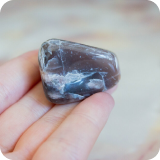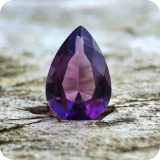- All You Need to Know When Rockhounding in Illinois
- Best Illinois Rockhounding Location
- Top 23 Gemstones in Illinois
- How to Do Rockhounding in Illinois
- FAQs
Have you ever wondered about the gemstones in Illinois? Which rare stones can you unearth in the Prairie State? How can you embark on a successful rockhounding adventure in this region?
Illinois, often known for its vast agricultural lands and iconic skyline, is also a treasure trove for gem enthusiasts. From the mesmerizing Geodes in Illinois to other hidden gems, a wealth of stones is waiting to be discovered.
Some rare gems in Illinois include beautiful Geodes that sparkle in many colors. These Geodes are not just stones; they’re a testament to Illinois’s geological wonders.
Whether you’re an amateur or an experienced gem hunter, digging for gems in Illinois can be a rewarding experience.
This article is your go-to guide if you’re keen on rockhounding in Illinois. We’ll delve deep into where to find these gems and how to use them.
So, gear up for an enlightening journey that will enhance your rockhounding adventures in Illinois!
All You Need to Know When Rockhounding in Illinois
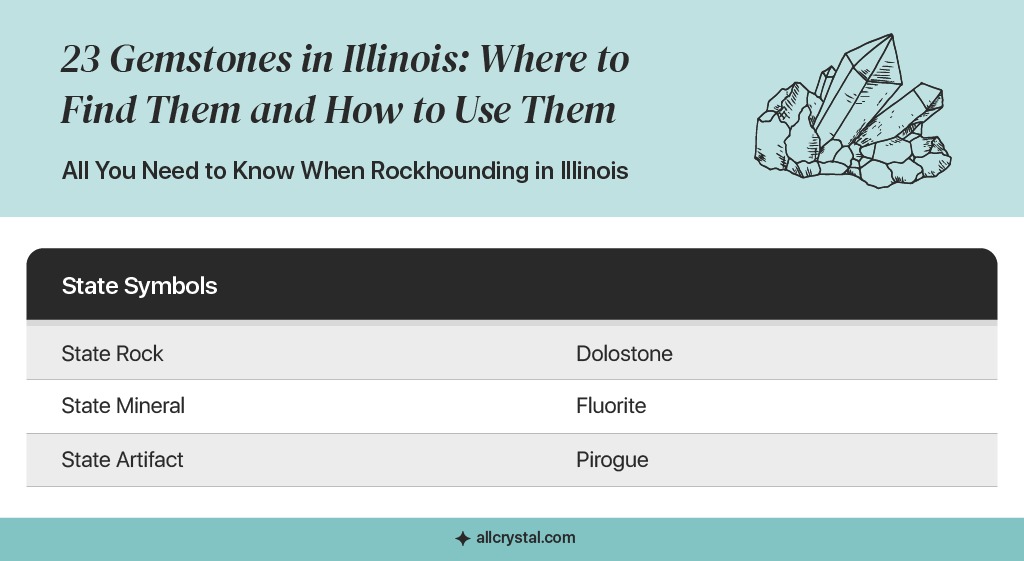
History of Rockhounding and Gemstones in Illinois
Illinois, rich in its geological diversity, has a storied history when it comes to rockhounding and gemstones. The state officially recognized Fluorite as its mineral in 1965, showcasing its significance in its mineralogical landscape.
This vibrant mineral, often found in various colors from purple to green, has been mined extensively in Southern Illinois, earning the region the title “Fluorspar Capital of the World.”
Rockhounding in Illinois is not just limited to Fluorite. Over the years, enthusiasts have been digging for gems in Illinois, especially Geodes, spherical rocks containing cavities lined with crystals.
Terrain, Topography, and Wildlife in Illinois
The state is divided into three primary physiographic regions: the Central Lowland, the Shawnee Hills, and the Coastal Plain. Each region offers unique geological formations, making Illinois a treasure trove for rockhounders.
The state’s abundant rivers and streams, particularly in the Driftless Area, are prime locations for finding Geodes in Illinois.
Beyond its geological wonders, Illinois is home to a rich array of wildlife. From white-tailed deer roaming the forests to the vibrant birdlife gracing its skies, the state’s natural beauty complements its geological allure.
Weather and Best Times to Rockhound
Illinois experiences a continental climate with cold winters and warm summers. The best time for rockhounding is spring and fall when the weather is mild and the ground is more accessible.
Summer can also be an excellent time to avoid the midday heat, especially in the early mornings or late evenings.
However, after heavy rains, riverbeds and creek sides can become excellent spots to search for gemstones in Illinois, as the water uncovers new specimens and washes away the overburden.
Environmental Consideration When Rockhounding
Always seeks permission before entering private lands and adhere to the “Leave No Trace” principles. This means packing out what you bring in, not leaving any trash behind, and minimizing environmental disturbances.
When digging for gems in Illinois, ensure you refill any holes you dig to prevent erosion and habitat disruption. Respect protected areas and wildlife habitats, and always prioritize the preservation of nature over pursuing personal collections.
Best Illinois Rockhounding Location
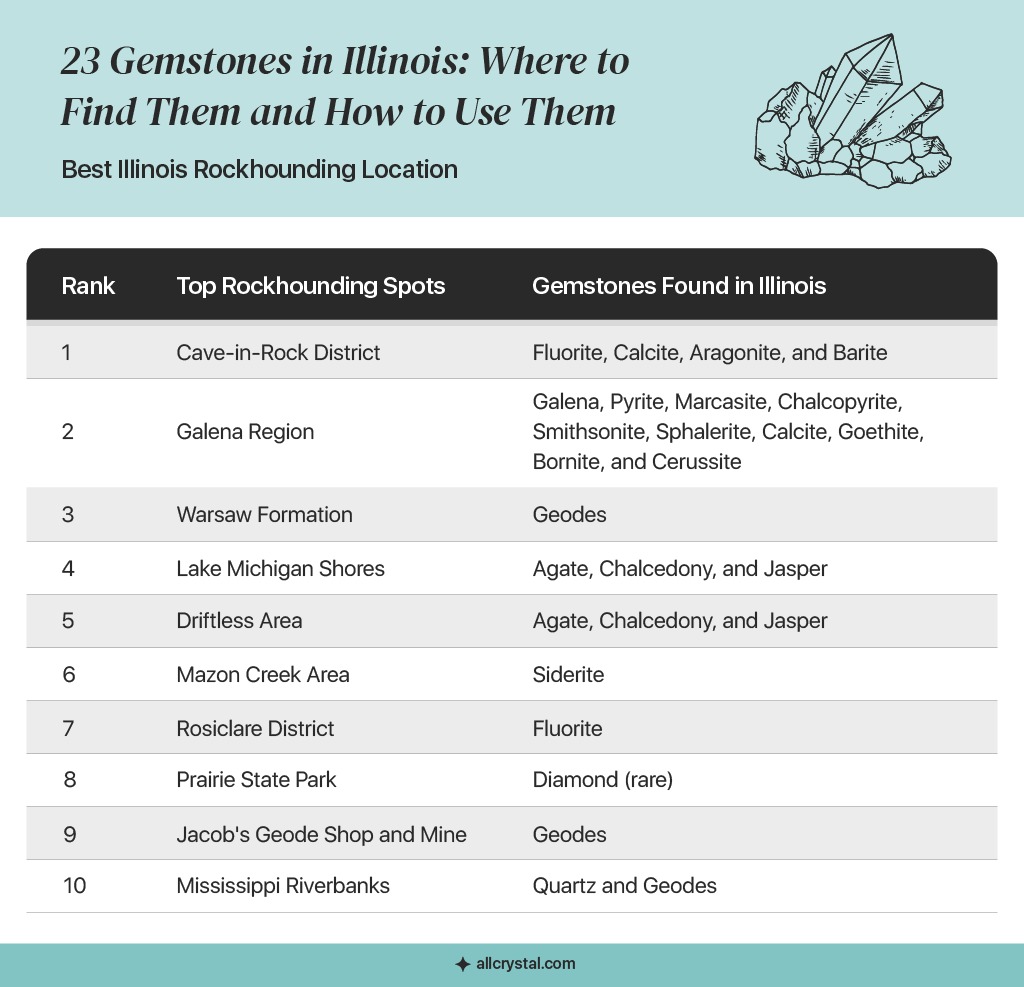
Note: The ranking in the table is based on the diversity and significance of gemstones that can be found at each location. Locations with a wider variety of notable gemstones or those known for rare finds are ranked higher.
For rockhounding enthusiasts, Illinois’ official website is a key resource, offering up-to-date details on locations, regulations, and available minerals. Before your rockhounding adventure, check out the Illinois’ Official Website for the latest information.
Disclaimer: Information in this article is based on data available when written. Crystal availability and rockhounding rules can change. Always research, consult local experts, and follow local guidelines before rockhounding. Safety first!
Top 23 Gemstones in Illinois
Illinois is a hidden gem (pun intended) for rock enthusiasts and gem collectors. With its rich geological history, the state boasts a variety of gemstones in Illinois that are both beautiful and significant. Let’s dive into some of the most sought-after stones in the Prairie State.
Fluorite (Fluorspar)
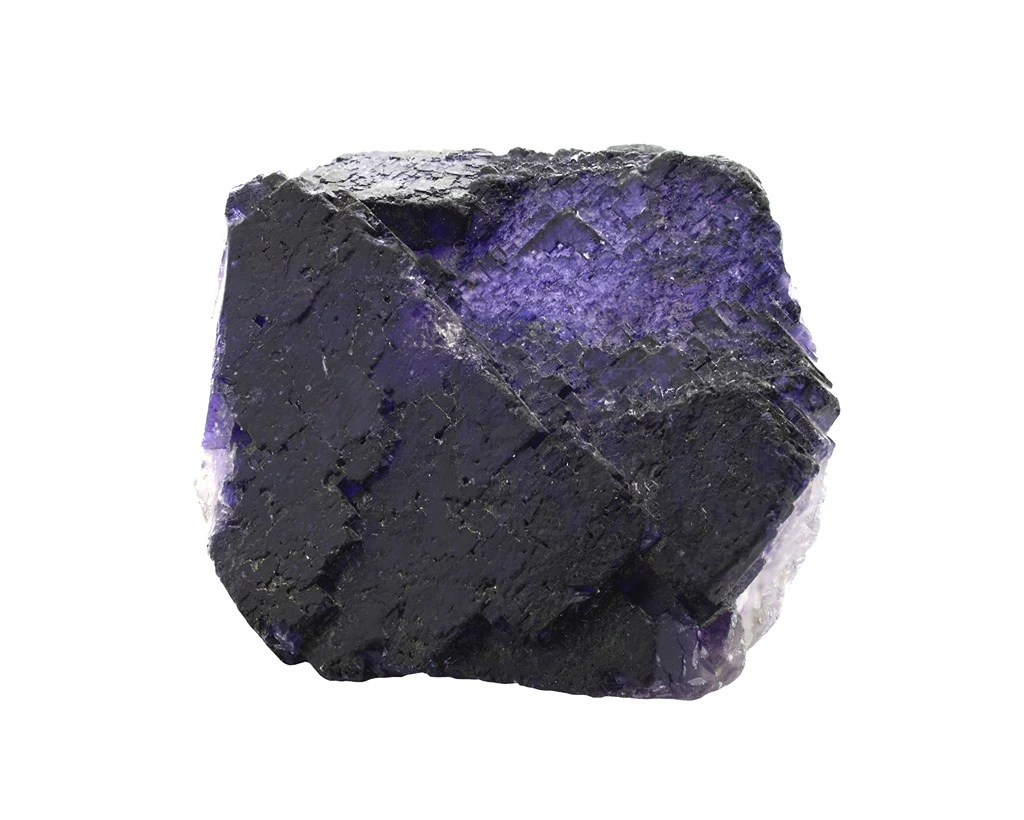
Fluorite, also known as Fluorspar, is the official state mineral of Illinois. It can primarily be found in the Southern Illinois region, especially in Hardin and Pope counties. The most notable locations include the Cave-in-Rock district and the Rosiclare district. These areas have been historically significant for public Fluorite mines in Illinois.
When searching for Fluorite, look for its distinctive cubic crystals ranging from purple to green. A good shovel, pickaxe, and safety goggles are essential for digging for gems in Illinois. Once you spot a potential Fluorite specimen, handling it with care is crucial due to its relative softness.
Fluorite is known for its grounding properties. It’s believed to enhance mental clarity, improve decision-making, and protect against negative energies.
Agate
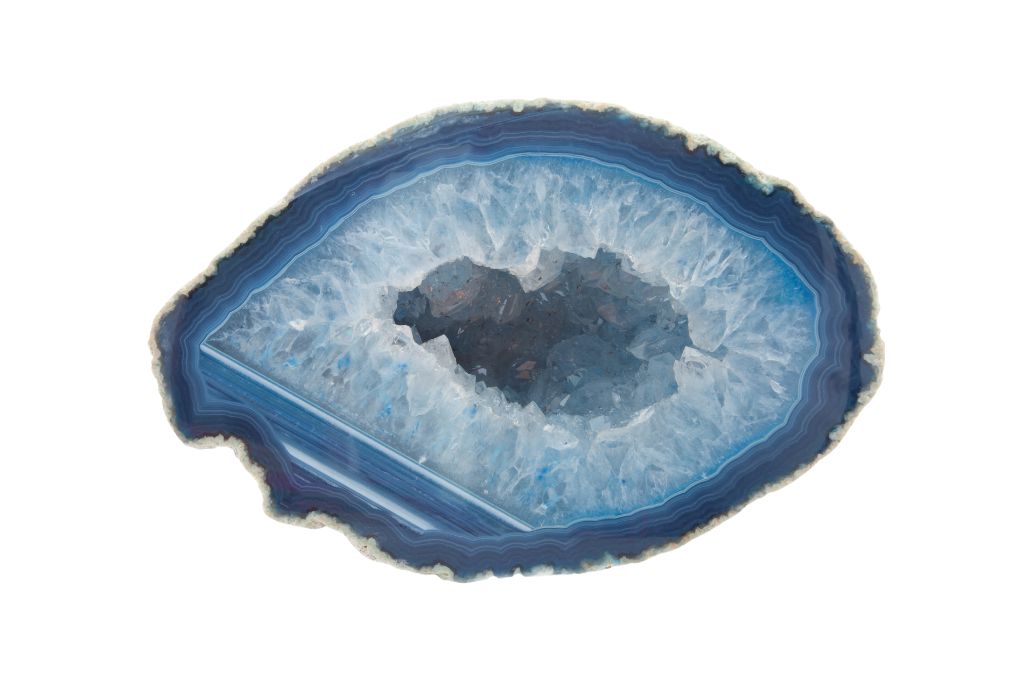
Agate, a beautiful banded stone, can be found scattered across various regions of Illinois. Some prime locations include Lake Michigan’s shores near Chicago and riverbeds in the Driftless Area.
These stones are often discovered after heavy rains or when the water levels recede. Watch for Agate’s characteristic banded patterns and in various colors when hunting.
A sturdy bucket, a small shovel, and a screen for sifting are handy tools for your rockhounding Illinois adventure. If you come across a potential Agate, it’s essential to clean it gently with water to reveal its patterns.
Agate is renowned for its balancing and harmonizing properties. It’s believed to stabilize the aura, eliminate negativity, and enhance mental function.
Geodes
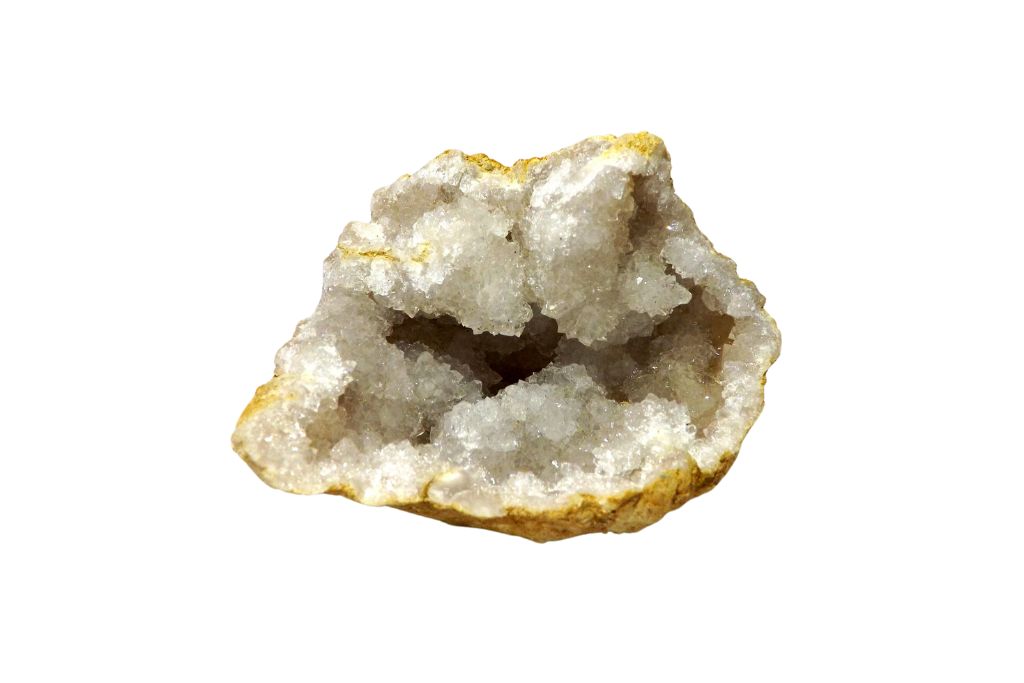
Illinois is particularly famous for its Geodes, especially in the western part of the state along the Mississippi River. Prime locations for Geode hunting in Illinois include the Warsaw Formation in Hancock County and the Jacob’s Geode Shop and Mine in Hamilton.
When looking for Geodes, search for round or oval rocks with a hollow interior filled with crystals. A hammer and chisel are essential tools for opening geodes. Once you find a Geode, the primary thing to do is to crack it open carefully to reveal the crystal formations inside.
Geodes are often associated with hidden potentials. They are believed to assist self-discovery, aid spiritual growth, and provide protective energy.
Chalcedony
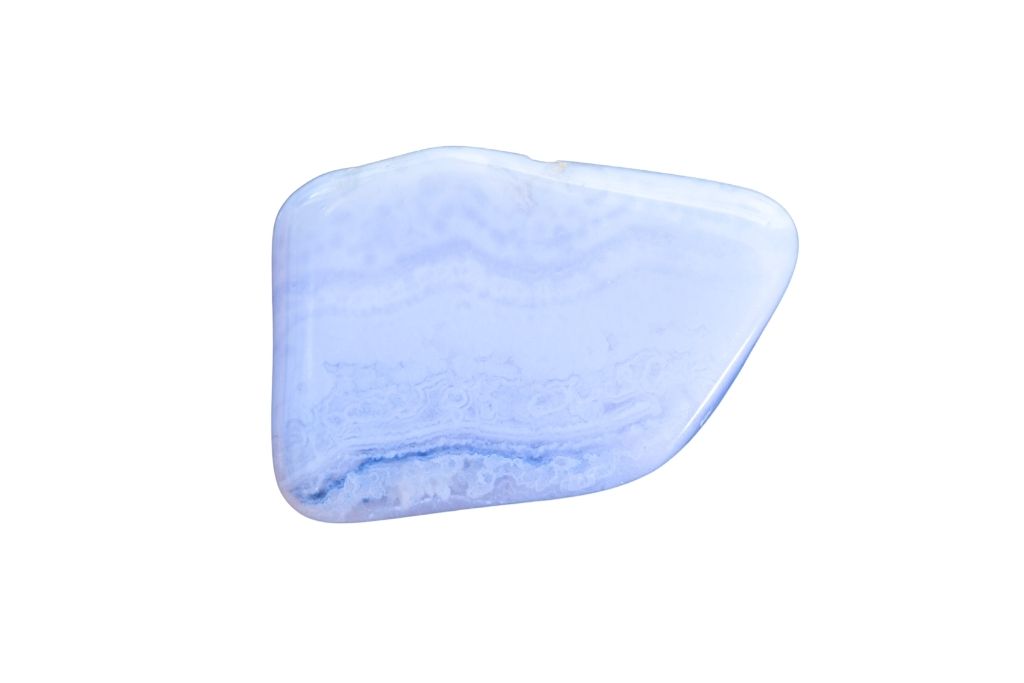
Chalcedony, a form of silica, is a famous find for rock enthusiasts in Illinois. This semi-translucent stone can be found in various regions across the state, particularly along the shores of Lake Michigan and in riverbeds throughout the Driftless Area.
When hunting for Chalcedony, look for its waxy luster and milky appearance. A small shovel, a sturdy bucket, and a screen for sifting are essential for your rockhounding Illinois adventure. Upon finding a potential Chalcedony specimen, cleaning it gently with water is crucial to reveal its true colors and patterns.
Chalcedony is known for its nurturing properties. It promotes goodwill, enhances group stability, and absorbs negative energies, providing a sense of peace and joy.
Pyrite
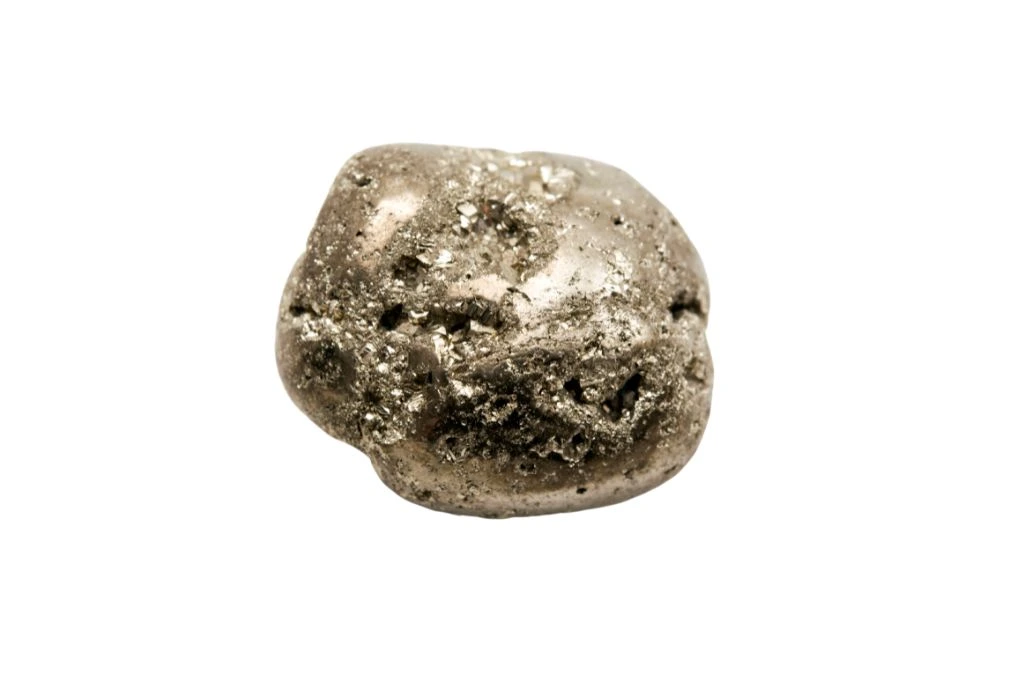
Often referred to as “Fool’s Gold” due to its metallic luster and gold hue, Pyrite can be found in various locations in Illinois, especially in coal mines and shale deposits. The state’s northern regions, particularly around Galena, are known for their Pyrite deposits.
When searching for Pyrite, watch for its distinctive shiny, metallic appearance. A pickaxe and a magnifying glass can be handy tools. If you spot a Pyrite specimen, handling it with care is essential, as it can be brittle.
Pyrite is associated with protection and intellect. It’s believed to shield against negative energies, enhance memory, and stimulate the intellect.
Marcasite
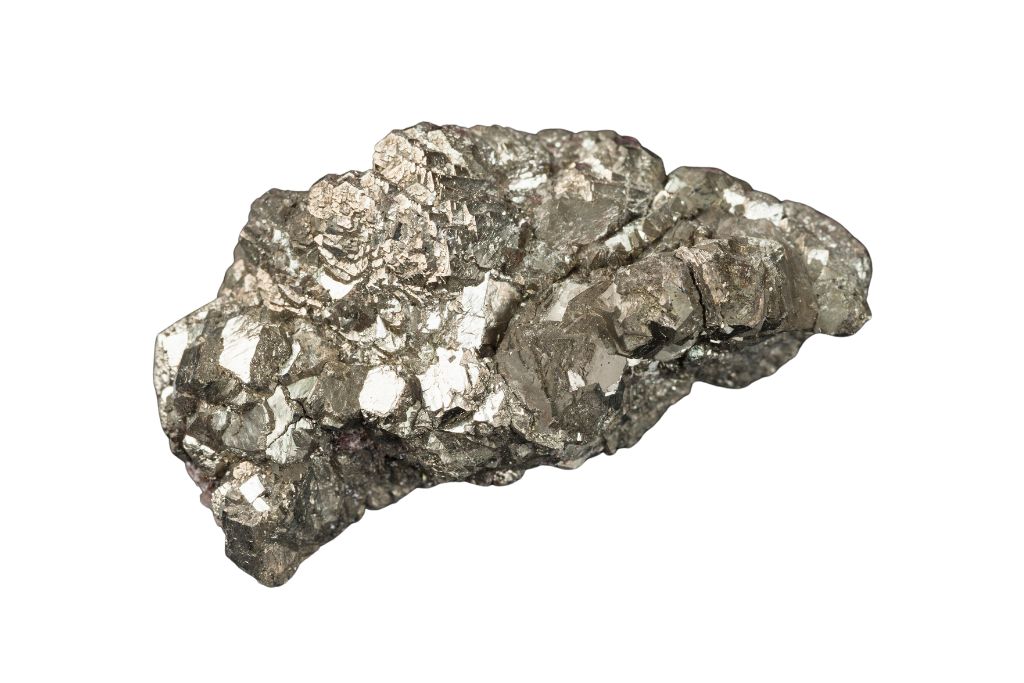
Marcasite, often mistaken for Pyrite due to its similar appearance, can be found in Northern Illinois, especially around the Galena area. It’s commonly found in limestone and shale deposits.
When hunting for Marcasite, look for its metallic luster and pale bronze-yellow hue. A hammer and chisel are essential tools for extracting Marcasite. Upon discovering a specimen, storing it away from excessive moisture is crucial as Marcasite can be prone to degradation.
Marcasite is believed to inspire relaxation, reflection, and spiritual development. It’s also associated with clarity and insight.
Jasper
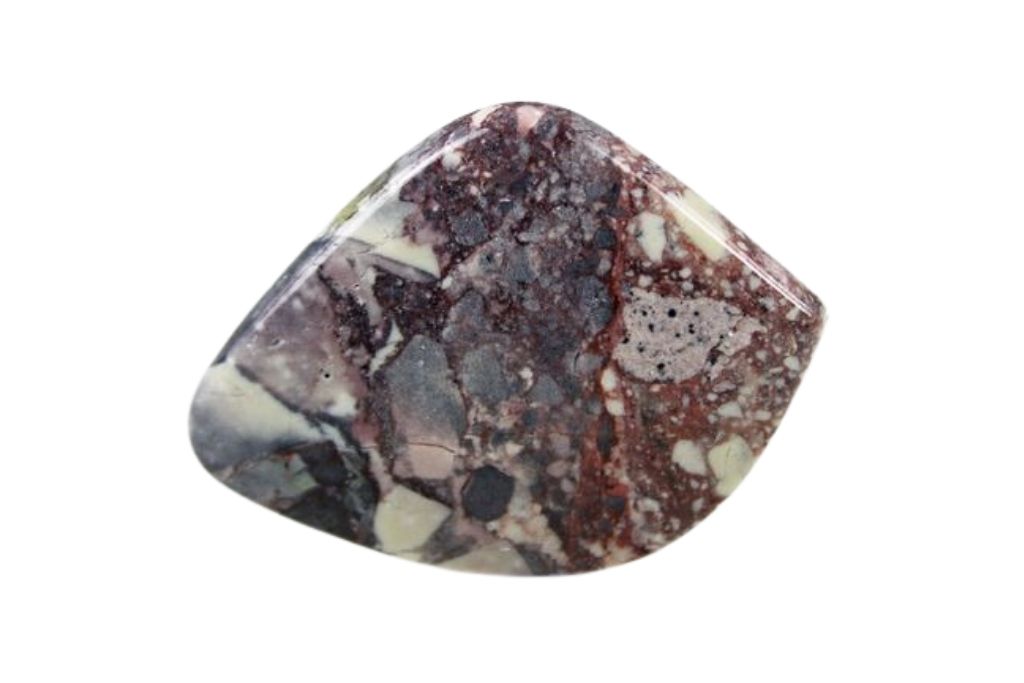
Jasper, a form of Chalcedony, can be found in various regions of Illinois, especially along riverbeds and lakeshores. The stone is often discovered after heavy rains or when water levels recede.
When looking for Jasper, search for its opaque appearance with patterns or bands. A sturdy bucket and a small shovel are handy tools for collecting Jasper. If you come across a potential Jasper stone, cleaning it with water can help reveal its patterns.
Jasper is renowned for its grounding and stabilizing properties. It’s believed to bring comfort, alleviate fear, and enhance determination.
Chalcopyrite
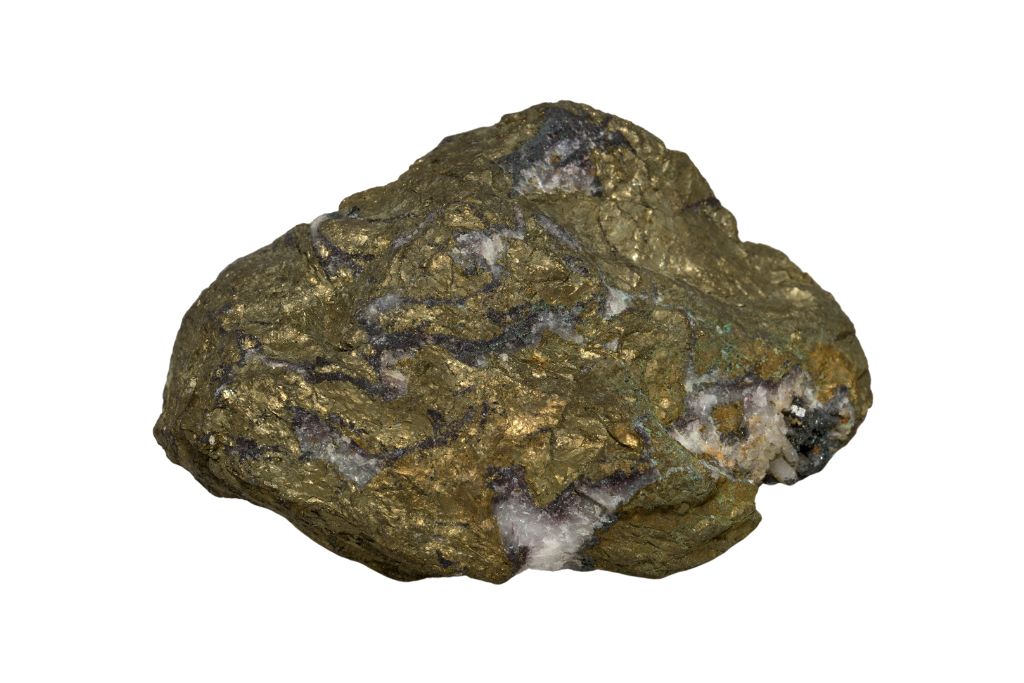
Chalcopyrite, a copper iron sulfide mineral, can be found in various locations in Illinois, especially in areas with copper deposits. The Galena region is particularly known for its Chalcopyrite occurrences.
When searching for Chalcopyrite, look for its brass-yellow color with a greenish tinge. A pickaxe and safety goggles are essential tools for extracting this mineral. Once you find a Chalcopyrite specimen, handling it with care is essential due to its relative softness.
Chalcopyrite is associated with the removal of energy blockages and the promotion of positive flow. It’s believed to enhance perception and stimulate creativity.
Calcite
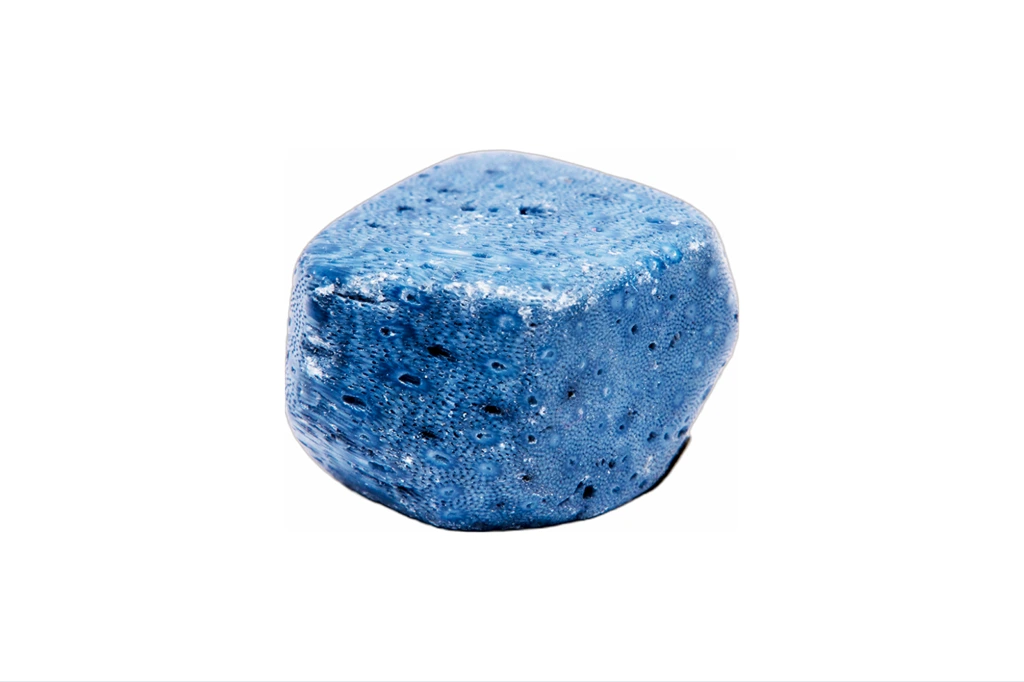
Calcite is a common mineral in various parts of Illinois. One of the state’s most notable locations for discovering Calcite is the Cave-in-Rock district in Hardin County. Also, they can be found in limestone quarries and mineral veins throughout the state, especially in the northern regions near Galena.
When searching for Calcite, look for its clear-to-white appearance, often exhibiting a rhombohedral crystal form. A pickaxe, shovel, and safety goggles are essential for extracting this mineral. Upon finding a Calcite specimen, it’s crucial to handle it gently to prevent any damage.
Calcite is known for its amplifying properties. It’s believed to enhance energy, cleanse negative energies, and boost memory. The crystal is also associated with emotional intelligence and discernment.
Malachite
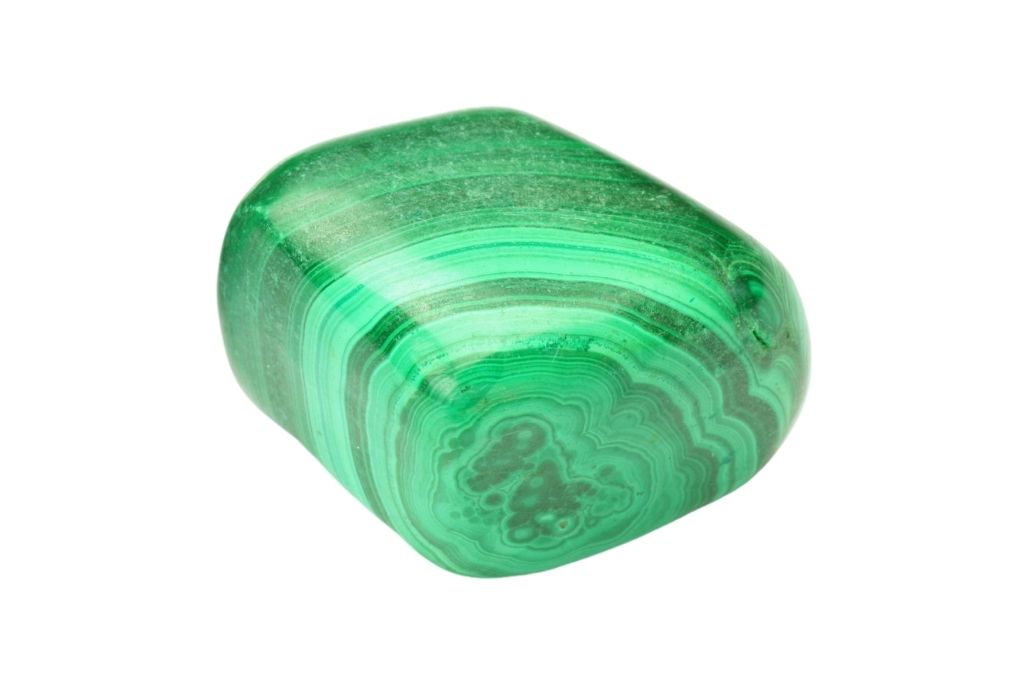
While Malachite is not as commonly found in Illinois as some other minerals, there have been occasional discoveries in the state’s southern regions, particularly near old copper mines.
When on the lookout for Malachite, search for its distinctive bright green color with banded patterns. A shovel, pickaxe, and a magnifying glass can be handy tools for your rockhounding adventure. If you come across a potential Malachite stone, cleaning it with water can help reveal its vibrant color and patterns.
Malachite is renowned for its transformative properties. It’s believed to protect against negative energies, enhance emotional balance, and stimulate inner growth.
Sphalerite
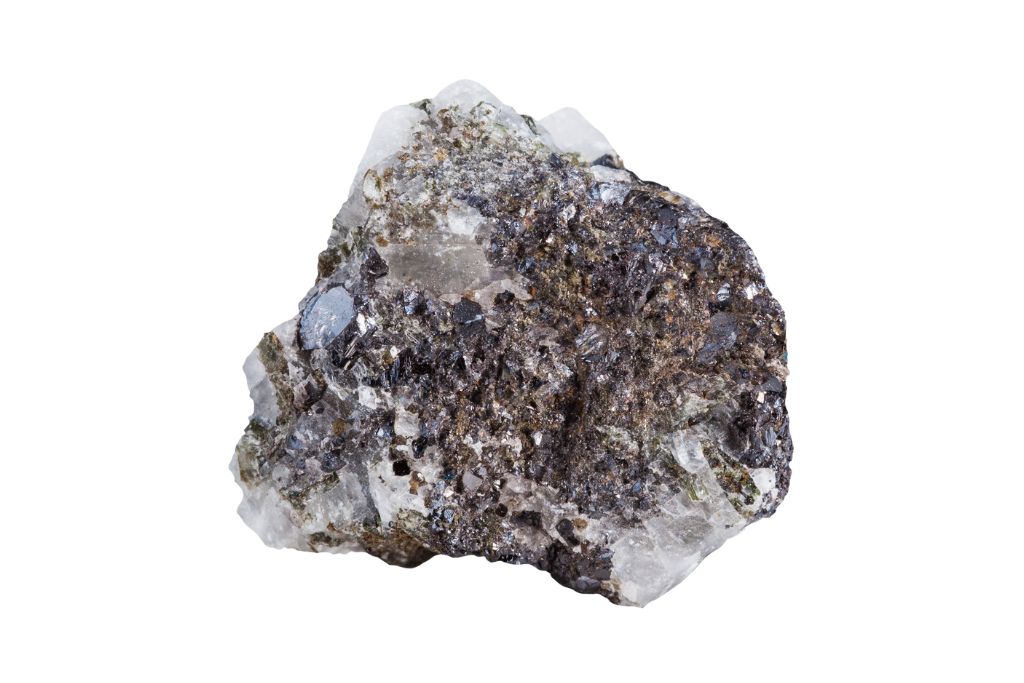
Sphalerite can be found in various locations in Illinois, especially in the northern regions near Galena. The mineral is often associated with lead and zinc deposits.
When searching for Sphalerite, look for its resinous to adamantine luster, often exhibiting a brown to yellow color. A pickaxe, hammer, and chisel are essential for extracting this mineral. Once you find a Sphalerite specimen, storing it away from direct sunlight is essential to preserve its color.
Sphalerite is associated with grounding and harmonizing energies. It’s believed to enhance intuition, boost physical vitality, and aid in discerning helpful and harmful energies.
Aragonite
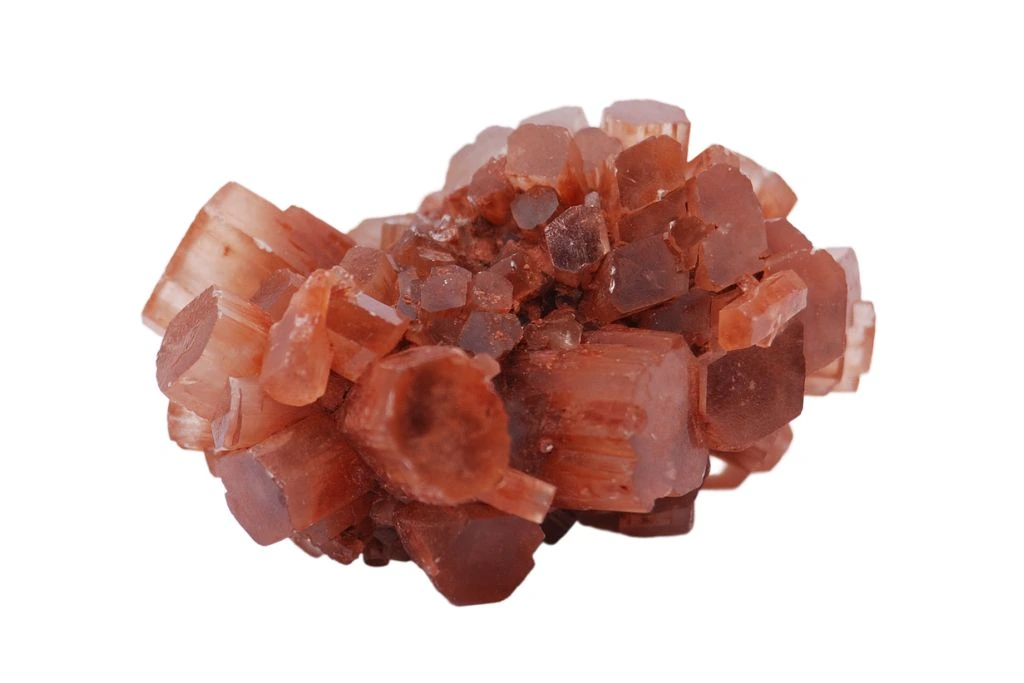
Aragonite, a polymorph of calcium carbonate, can be found in various regions of Illinois, especially in limestone quarries and cave formations. The Cave-in-Rock district in Hardin County is one of the prime locations for Aragonite discoveries.
When hunting for Aragonite, look for its needle-like crystal formations, often exhibiting a white to yellowish color. A shovel, pickaxe, and safety goggles are handy tools for collecting Aragonite. Upon discovering a specimen, handling it with care is crucial due to its relative softness.
Aragonite is known for its stabilizing properties. It’s believed to provide strength, support emotional growth, and aid in releasing past traumas and wounds.
Barite
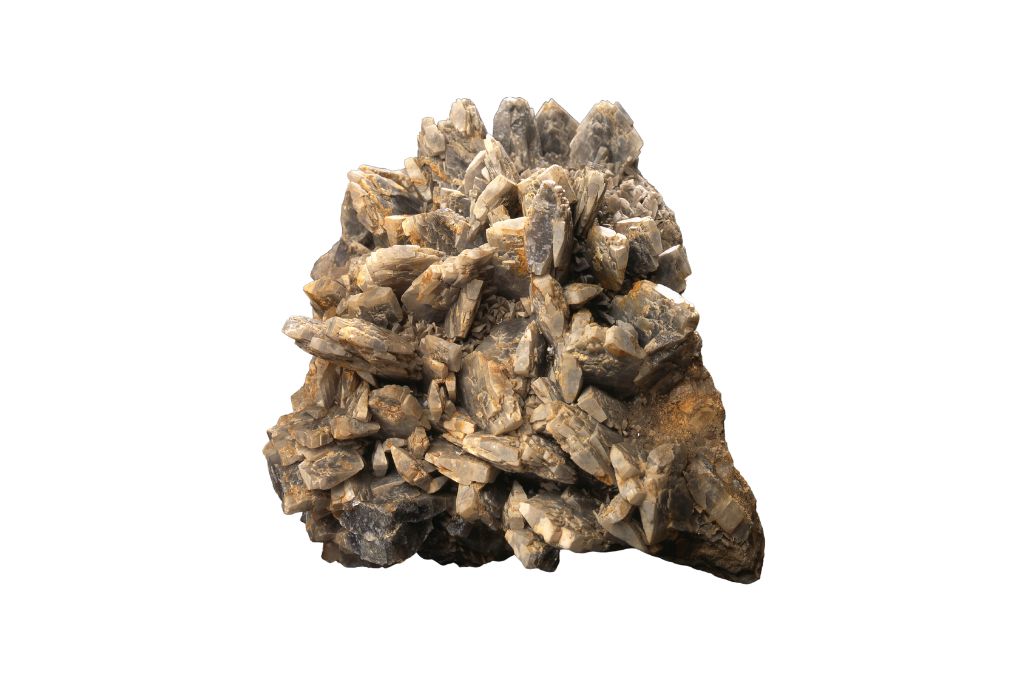
Barite, known for its high density and distinct crystal formations, can be found in various regions of Illinois. One of the most notable locations for Barite discoveries is the Cave-in-Rock district in Hardin County.
When searching for Barite, look for its tabular or prismatic crystal formations, often exhibiting a white to yellowish color. Essential tools for extracting Barite include a pickaxe, shovel, and safety goggles. Upon finding a Barite specimen, it’s crucial to handle it gently to prevent any damage.
Barite is known for its grounding properties. It’s believed to enhance intuition, provide clarity, and aid in spiritual growth.
Dolomite
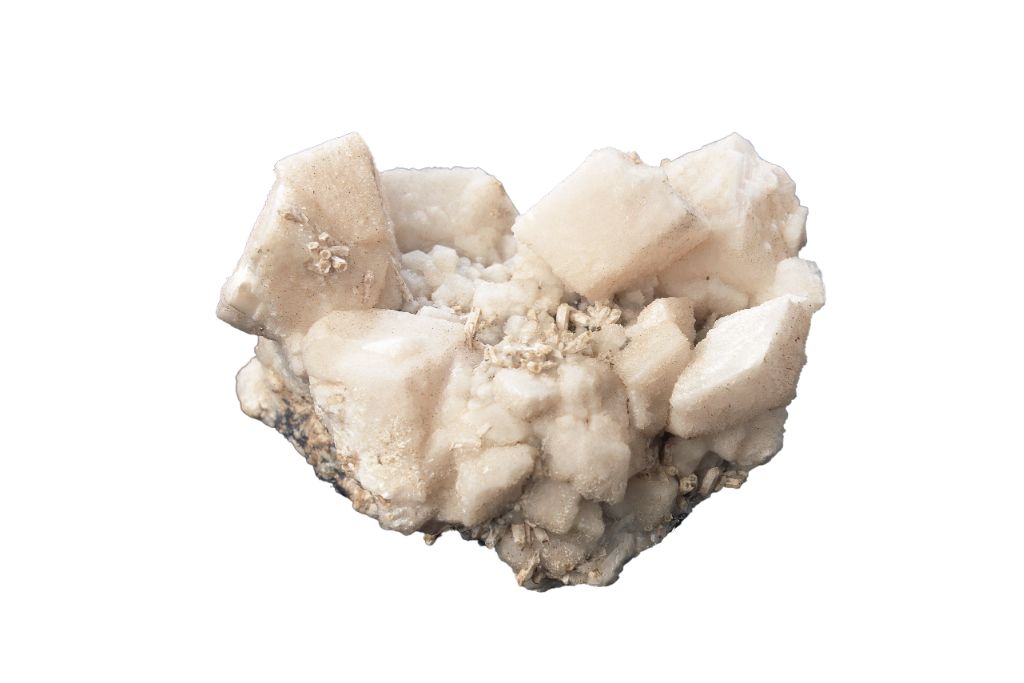
Dolomite, a carbonate mineral, is abundant in Illinois. It can be found extensively in the state’s northern regions, especially in Limestone Quarries and rock formations.
When looking for Dolomite, search for its pearly luster and rhombohedral crystal form. A shovel, pickaxe, and a magnifying glass are handy tools for collecting Dolomite. If you come across a potential Dolomite stone, cleaning it with water can help reveal its true color and patterns.
Dolomite is renowned for its calming properties. It promotes self-realization, balances emotions, and enhances meditation practices.
Goethite
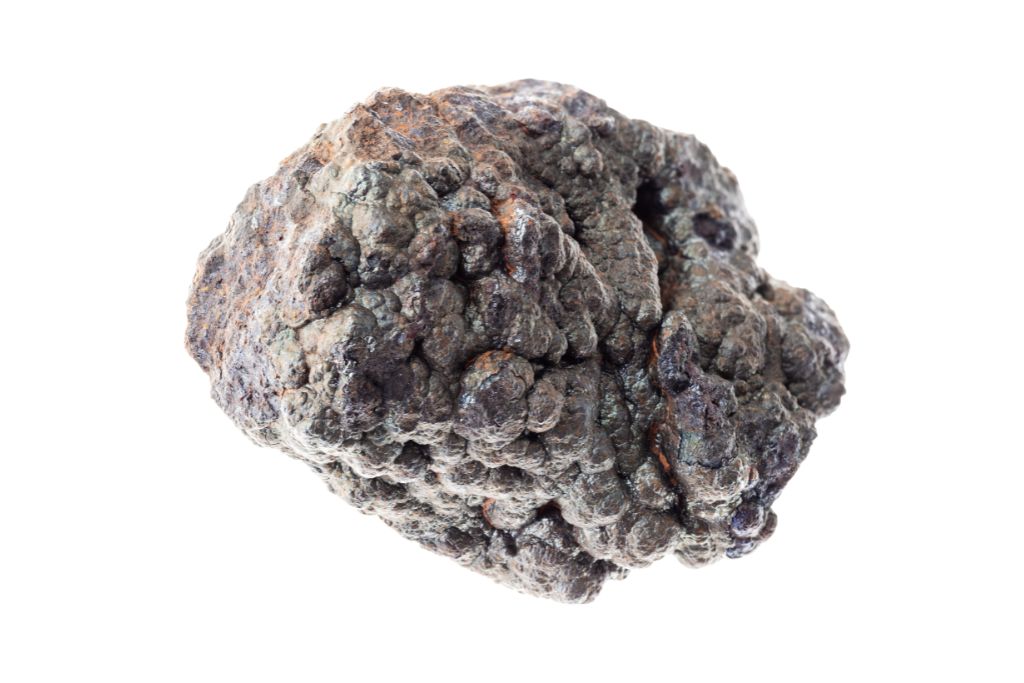
Goethite, an iron-bearing hydroxide mineral, can be found in various parts of Illinois, especially in areas with iron deposits. The northern regions near Galena are known for their Goethite occurrences.
When searching for Goethite, look for its brownish color and ocher-like appearance. A pickaxe, hammer, and chisel are essential for extracting this mineral. Once you find a Goethite specimen, storing it in a cool, dry place is essential.
Goethite is associated with grounding and protection. It’s believed to aid in emotional balance and enhance intuition.
Quartz
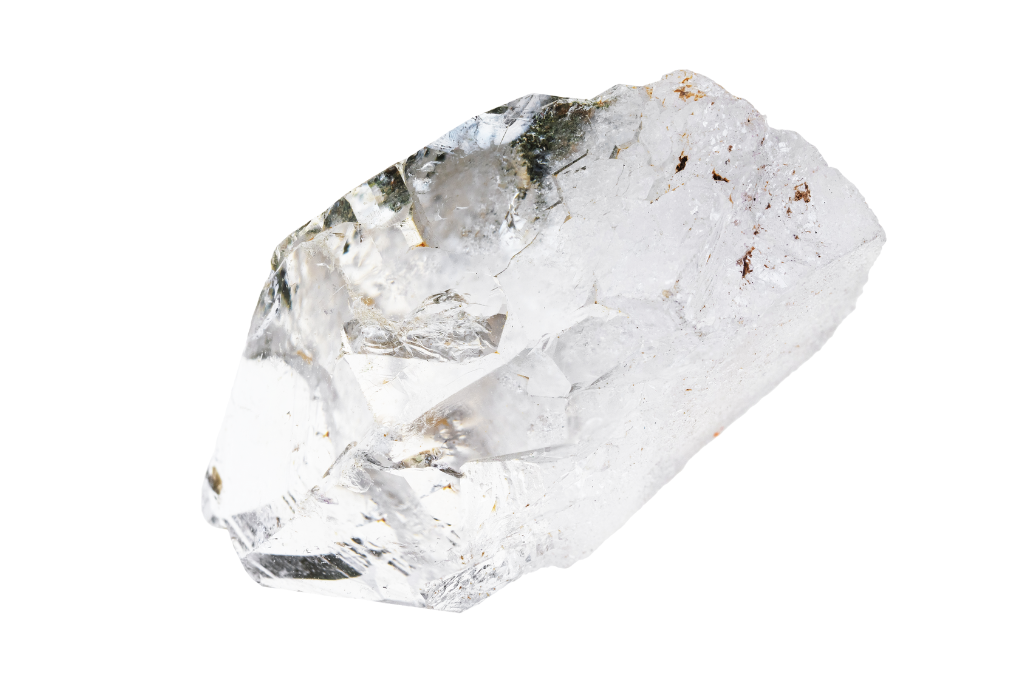
Quartz, one of the most common minerals on Earth, can be found abundantly in Illinois. Prime locations include riverbeds, especially along the Mississippi River, and various quarries throughout the state.
When hunting for Quartz, look for its hexagonal crystal formations and glass-like luster. A sturdy bucket, a small shovel, and a screen for sifting are essential for collecting Quartz. Upon discovering a specimen, cleaning it gently with water is crucial to reveal its clarity.
Quartz is known for its amplifying and healing properties. It’s believed to enhance energy, improve focus, and promote clarity of thought.
Selenite
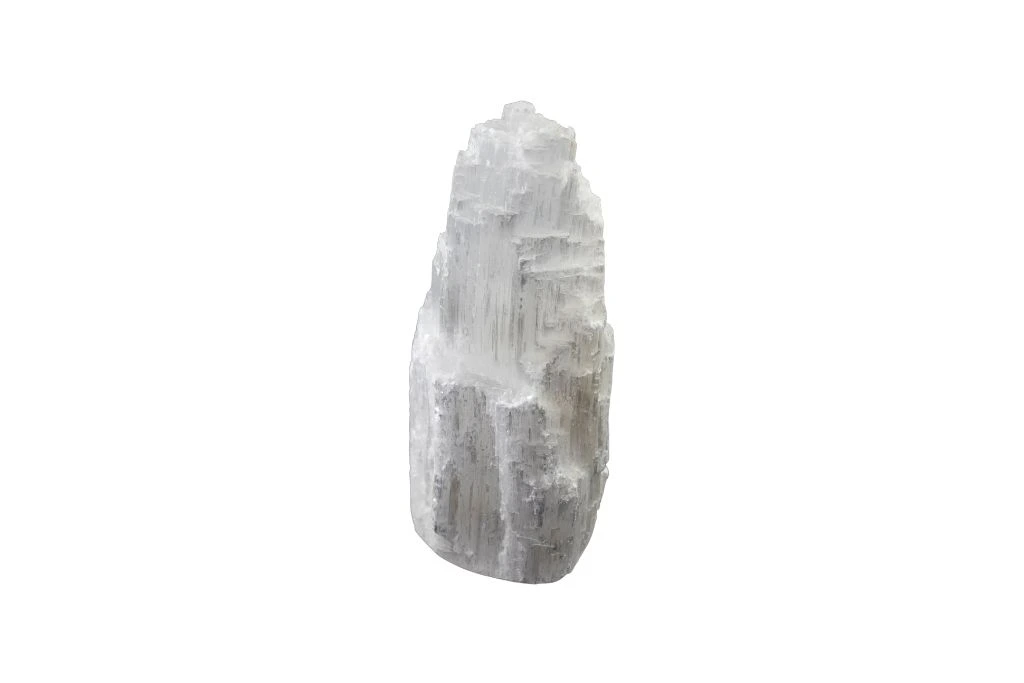
Selenite, a form of gypsum, can be found in various regions of Illinois, especially in sedimentary rock formations and near old gypsum mines.
When looking for Selenite, search for its transparent or translucent appearance with a vitreous luster. A shovel and a soft brush are handy tools for collecting Selenite. If you come across a potential Selenite specimen, handling it with care is essential as it can be quite fragile.
Selenite is renowned for its cleansing properties. It’s believed to clear negative energies, enhance mental clarity, and promote spiritual growth.
Bornite
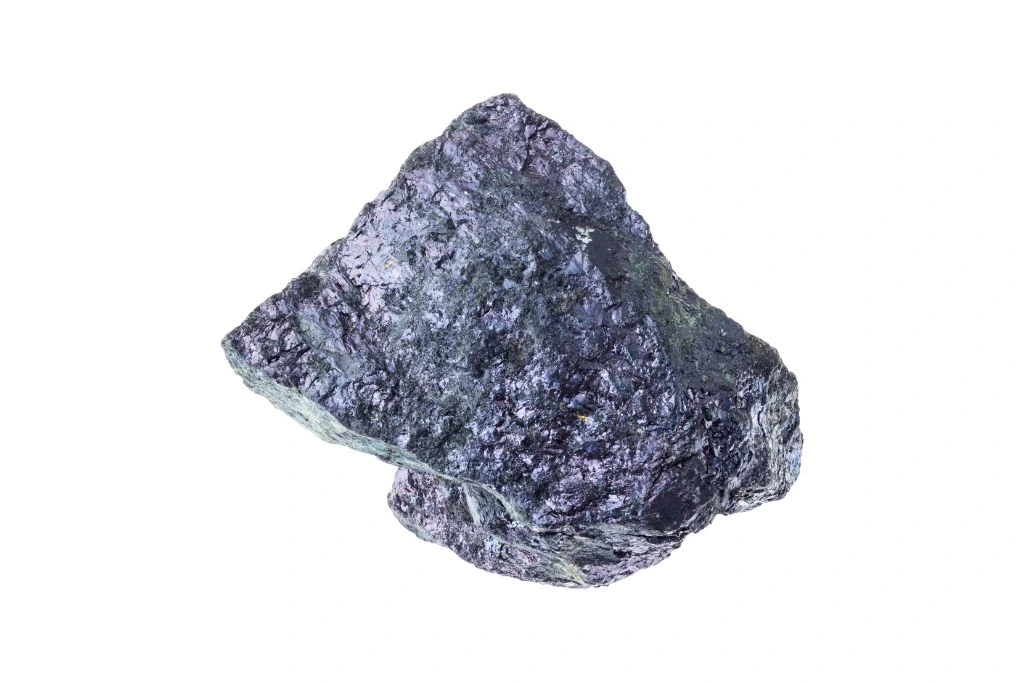
Bornite, often called “Peacock Ore” due to its iridescent colors, can be found in various parts of Illinois, especially near copper deposits. The Galena region is particularly known for its Bornite occurrences.
When searching for Bornite, look for its tarnished purple to bronze color. A pickaxe and safety goggles are essential tools for extracting this mineral. Once you find a Bornite specimen, handling it with care is essential due to its relative softness.
It is associated with happiness and joy. It enhances creativity, dispels negative energies, and promotes a positive outlook.
Cerussite
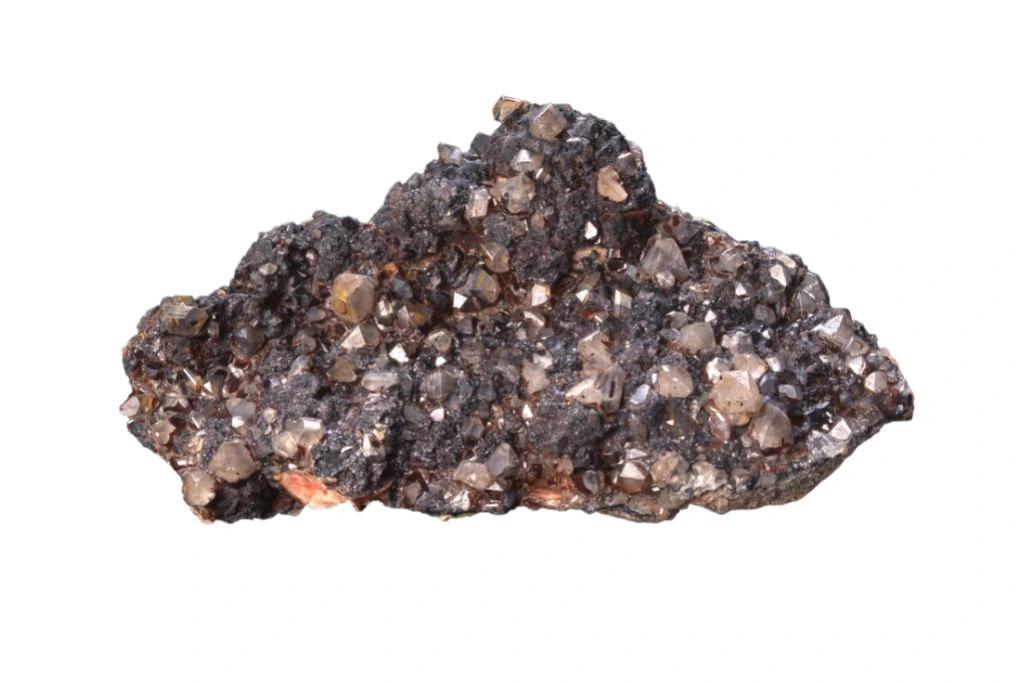
Cerussite, a lead carbonate mineral, has been identified in various parts of Illinois. One of the primary locations for Cerussite discoveries is the Galena region, known for its rich lead deposits. Old lead mines scattered throughout the state, especially in the northern regions, have also reported Cerussite occurrences.
When searching for Cerussite, look for its adamantine luster and clear-to-white appearance, often exhibiting a prismatic crystal form. Essential tools for extracting Cerussite include a pickaxe, shovel, and safety goggles. Upon finding a Cerussite specimen, it’s crucial to handle it gently, given its delicate nature.
Cerussite is known for its grounding properties. It’s believed to enhance communication, promote clarity, and aid in spiritual connection.
Galena
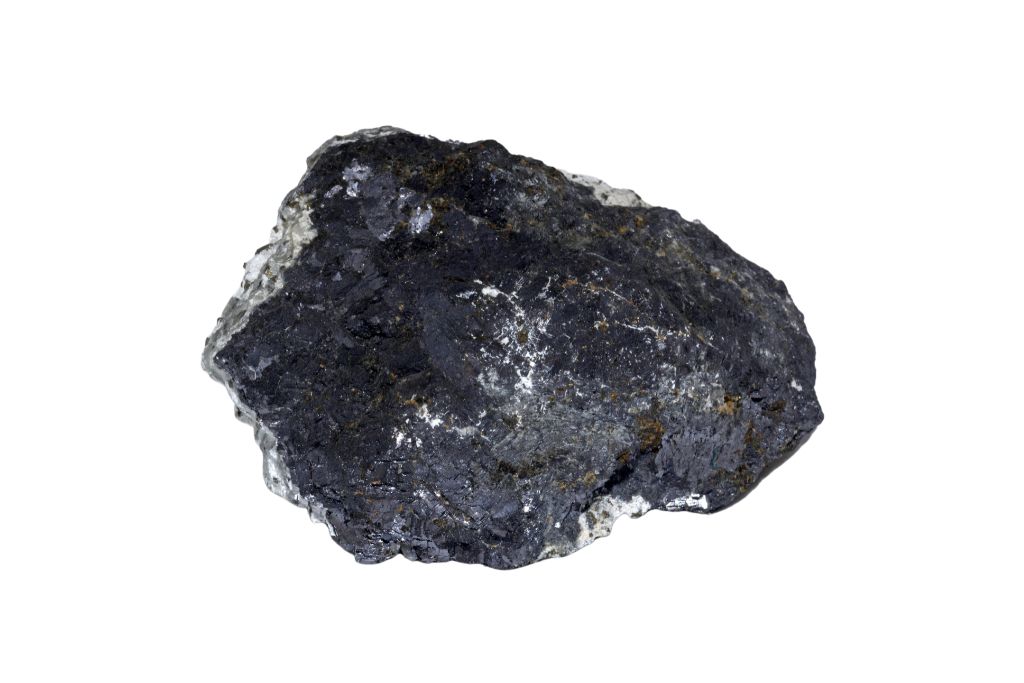
Galena, the natural mineral form of lead sulfide, is abundant in Illinois, especially in the region with its name. The Galena area, located in the northwestern part of the state, is affluent in Galena deposits and has been a significant lead source for centuries.
When on the lookout for Galena, search for its cubic crystal formations and bright metallic luster. A shovel, pickaxe, and a magnifying glass are handy tools for your rockhounding Illinois adventure. If you come across a potential Galena specimen, cleaning it with water can help reveal its metallic sheen.
Galena is renowned for its harmonizing properties. It provides grounding, enhances spiritual growth, and promotes self-discovery.
Diamond (rare)

While Illinois is not traditionally known for Diamond discoveries, there have been occasional reports of Diamonds being found, especially near glacial deposits. The most notable location for Diamond discoveries in Illinois is the Prairie State Park in the southern part of the state.
When searching for Diamonds in Illinois, look for their unmistakable brilliance and adamantine luster. A sieve, shovel, and a magnifying glass are essential for digging for gems in Illinois. If you spot a potential Diamond, the primary thing to do is to have it authenticated by a gemologist.
Diamonds are symbols of purity and perfection. They are believed to amplify energy, enhance clarity of thought, and promote inner strength.
Siderite
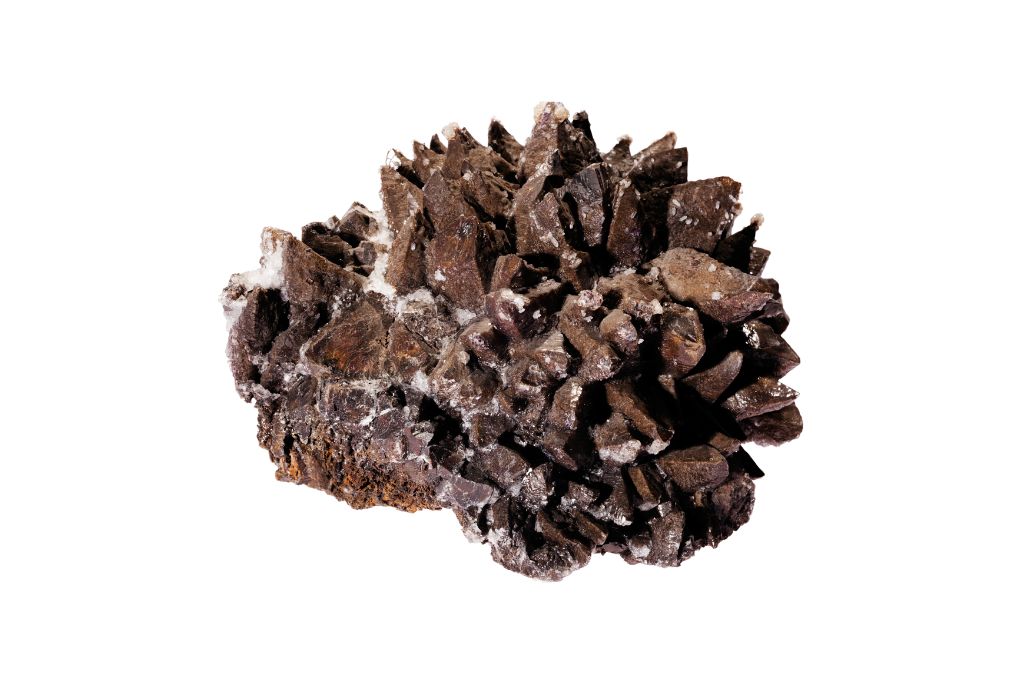
Siderite, an iron carbonate mineral, has been identified in various parts of Illinois. One of the most renowned locations for Siderite discoveries is the Mazon Creek area, famous for its unique fossil beds and mineral deposits. Old iron mines scattered throughout the state, especially in the northern regions, have also reported Siderite occurrences.
When searching for Siderite, look for its brownish-to-tan color, often exhibiting a rhombohedral crystal form. Essential tools for extracting Siderite include a pickaxe, shovel, and safety goggles. Upon finding a Siderite specimen, it’s crucial to handle it gently to prevent any damage.
Siderite is known for its grounding properties. It’s believed to enhance communication, promote clarity, and aid in emotional balance.
Smithsonite
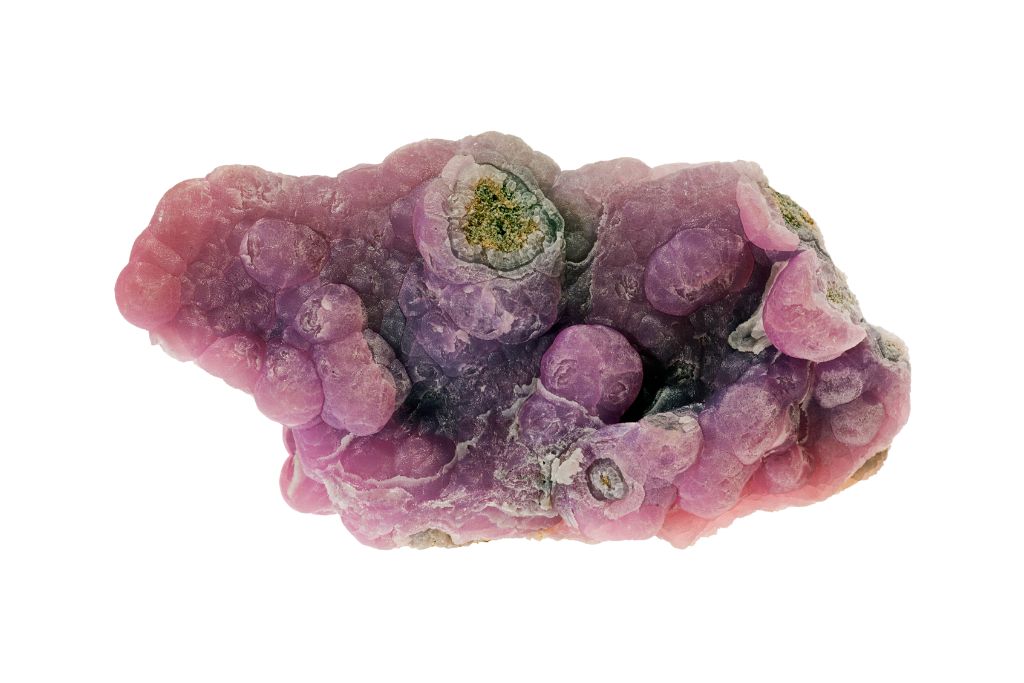
Smithsonite, a zinc carbonate mineral, can be found in various regions of Illinois, especially near old zinc mines. The Galena area, with its rich mineral deposits, is one of the prime locations for Smithsonite discoveries.
When looking for Smithsonite, search for its botryoidal or globular formations, often exhibiting a range of colors from blue to green to pink. A shovel, pickaxe, and a magnifying glass are handy tools for collecting Smithsonite. If you come across a potential Smithsonite specimen, cleaning it with water can help reveal its true color and patterns.
Smithsonite is renowned for its soothing properties. It promotes emotional healing, enhances intuition, and provides comfort during challenging times.
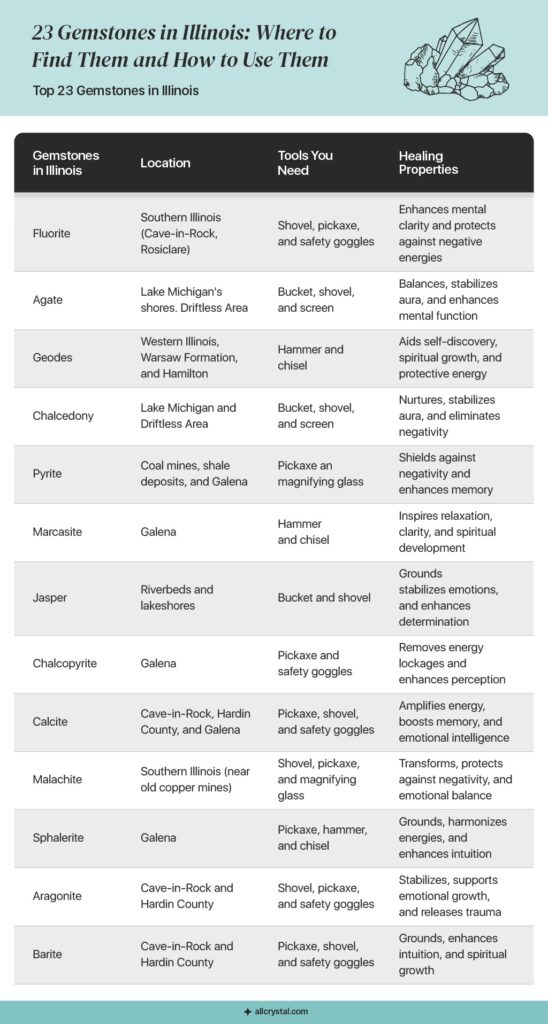
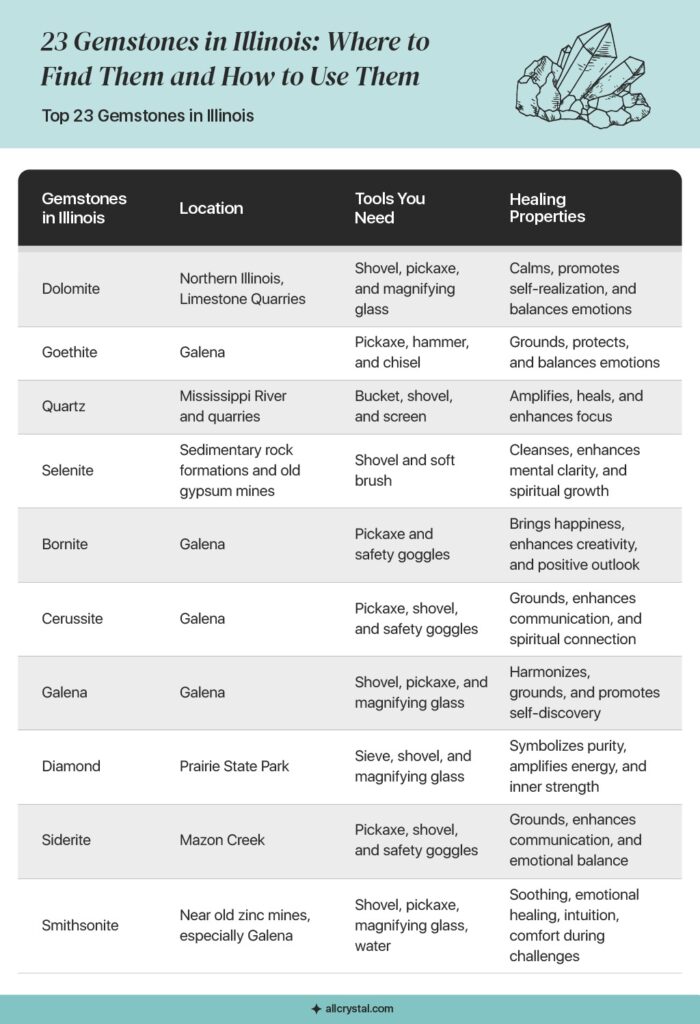
How to Do Rockhounding in Illinois
Illinois, with its rich geological history, provides ample opportunities for rockhounding enthusiasts.
Whether you’re an experienced collector or a beginner, understanding the fundamental aspects of rockhounding in the Prairie State is essential.
Here’s a comprehensive guide to help you begin your rockhounding journey in Illinois.
Tools and Gear You Need for Crystal Hunting in Illinois
- Shovel and Pickaxe: These are necessary for digging and breaking rocks.
- Safety Goggles: Protect your eyes from flying debris while digging.
- Magnifying Glass: Helps you look closely at potential finds.
- Screen or Sieve: Useful for sifting through dirt and finding smaller specimens.
- Sturdy Bucket: Use it to collect and carry your discoveries.
- Hammer and Chisel: Needed for getting minerals out and opening Geodes.
- Soft Brush: Helps clean dirt off delicate specimens.
- Gloves: Protect your hands during digging and handling sharp rocks.
How to Pack, Transport, and Cut Crystals You Find in Illinois
- Wrap Specimens: Use old newspapers or bubble wrap to protect each find during transport.
- Use Sturdy Containers: Plastic containers or boxes with compartments can help organize and safeguard your treasures.
- Label Your Finds: Labeling helps identify and keep track of where and when you found each specimen.
- Cutting Crystals: Consider using a lapidary saw if you want to cut or polish your crystals. Make sure you wear safety goggles and gloves during the process.
Safety Regulations for Rockhounding in Illinois
- Permission: Always ask for permission if you’re on private property.
- Stay Informed: Learn about state and local rules for rockhounding, especially in protected areas.
- Leave No Trace: Respect nature by not leaving trash behind and filling in any holes you dig.
- Stay Safe: Let someone know where you are and when you’ll be back. Carry a first-aid kit and stay hydrated.
Tips for Successful Rockhounding in Illinois
- Research: Use resources like the “Rockhounding in Illinois Map” to find potential locations.
- Join Local Clubs: Connect with local rockhounding groups for advice and insights.
- Start After Rains: Rain can wash away topsoil, revealing hidden treasures.
- Document Your Finds: Keep a journal with each find’s date, location, and description.
- Patience is Key: Rockhounding takes time, so don’t get discouraged if you don’t find something immediately.
Disclaimer: Rockhounding regulations and conditions can vary by location. Always follow local laws and guidelines. The tools and techniques mentioned above are general recommendations; prioritize safety and use tools you’re comfortable with.
FAQs
What Gemstones Can Be Found in Illinois?
Illinois has various gemstones, including Fluorite, Agate, Geodes, Chalcedony, Pyrite, and many more.
Where Can I Go Geode Hunting in Illinois?
Illinois is particularly famous for its Geodes, especially in the western part of the state along the Mississippi River. Prime locations include the Warsaw Formation in Hancock County and the Jacob’s Geode Shop and Mine in Hamilton.
Is Geode Hunting Legal in Illinois?
Yes, Geode hunting is legal in Illinois, especially in designated areas and public lands. However, always ensure you have the necessary permissions and follow local regulations.
What Tools Do I Need for Rockhounding in Illinois?
Essential tools for rockhounding include a shovel, pickaxe, safety goggles, bucket, screen for sifting, hammer, chisel, and a magnifying glass, among others.
Are There Any Public Fluorite Mines in Illinois?
Yes, Illinois has historically been significant for public Fluorite mines, especially in the Southern Illinois region, such as the Cave-in-Rock and Rosiclare districts.


